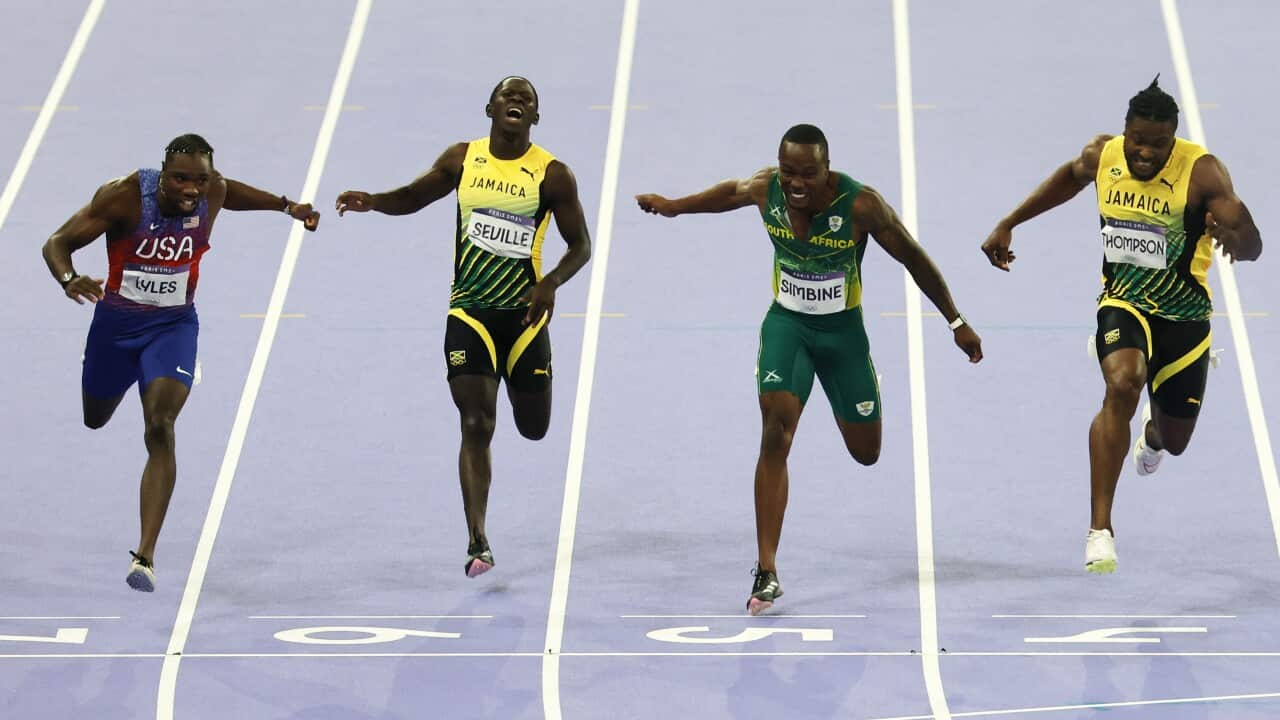Very few men, and no women, have ever run 100 metres in under 10 seconds.
Jamaica’s Usain Bolt set the record for the fastest dash in 2009, and didn’t beat his 9.58 seconds in the eight years he continued racing afterward.
Scientists have speculated that humans will one day be able to break the nine-second barrier for the distance and probably the eight-second barrier as technology and training methods develop.
At the Paris Olympics, US athlete Noah Lyles won gold in the 100m sprint final on Monday morning (AEST), while St Lucia’s won the women’s final early on Sunday morning (AEST).
Here’s how to run the optimal race.
Preparing for a 100-metre sprint
Ranell Hobson is the training director at the Sydney-based Academy of Sport Speed.
She said there is an extraordinary amount of gym and track work that goes into preparing for a race that only lasts a handful of seconds.
Olympians are “going to be training at least five or six days a week”, she told SBS News.
“As well as gym work, they’re going to be doing a combination of pure speed work, block clearance work, tempo training, rhythmical training and speed endurance training,” she said.
Athletes will adapt their gym program based on whether they are “concentric force dominant”, meaning average height and great at accelerating, or “elastic dominant”, meaning very tall and springy, Hobson said.
That means some athletes will focus more on training strength and explosiveness in their whole body. Others focus on plyometrics — a type of strength training that focuses on explosive movements and jumping.
They will all train their arms and upper body because pumping the arms plays a crucial role in driving the body forward and balancing what the legs are doing, Hobson said.
On your marks
An enormous amount of force goes through the body when pushing off the blocks.
Athletes only get one chance at the take-off; the rules no longer permit false starts.
Writing in The Art of Sprinting, Warren Doscher says “the strongest leg should be in the forward pedal of the starting block. The fingertips should be set just behind the starting line (not touching it) with the arms mostly straight but the elbows unlocked.”
Get set, go!
The shorter you are the faster you get out of the blocks, Hobson said.
Usain Bolt was considered to have a relatively slow start because his thigh bones were comparatively long so swinging them took longer than it did for his shorter competitors.
Your whole body is involved in generating power and acceleration off the blocks, Hobson said.
“You have to have incredible explosive strength through the back chain,” she said. “So through your glutes, through your quadriceps, through your calf complex, really good strong core, your posterior integrity has to be outstanding.”
Winning the race
Bolt would quickly overtake his competitors once he had transitioned to “maximum velocity”, which sprinters are in for most of the race.
Transitioning from the block clearance is “like an airplane lifting up,” Hobson said.
“So they’re transitioning up into max velocity and then max velocity is where they’re working on now vertical propulsion,” she said.
“They’re getting really high off the track, they’ve got really good high knee drive, beautiful stiffness through the ankle complex so that they’re not losing any energy through the track.”
“They’re maximising all of that energy to propel themselves forward and then just holding on for dear life to the finish line.”
From left to right): Sha’carri Richardson of Team USA, Julien Alfred of Team Saint Lucia, Melissa Jefferson of Team USA and Tia Clayton of Team Jamaica Women’s 100m final on Saturday (local time). Source: Getty / China News Service
One of the fastest men on the planet currently, United States sprinter Noah Lyles, has said he aims to reach the 10-metre mark in seven steps “while being powerful and fast”.
“You can’t be over-powerful,” he has said.
Top sprinters will begin to reach their top speed about 30 metres into the race and attempt to maintain it.
The US’ Sha’Carri Richardson was one of the favourites for the women’s 100m event, and she placed second behind Alfred.
Analysts regularly praise Richardson for her precision. She places her feet directly under her torso when she runs, allowing her stride to stay bouncy and powerful at top speed.
At 70 metres into the race, all athletes will start decelerating, even if only to a small degree.
As Hobson puts it, sprinters are trying to push extreme force and power through their feet while also staying light and relaxed at the same time.
“It’s very hard to learn, but sprinters have a beautiful complexity between explosive strength, explosive speed, and almost a lightness and almost a relaxation to the way that they run,” she said

